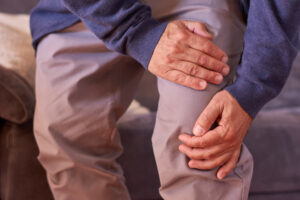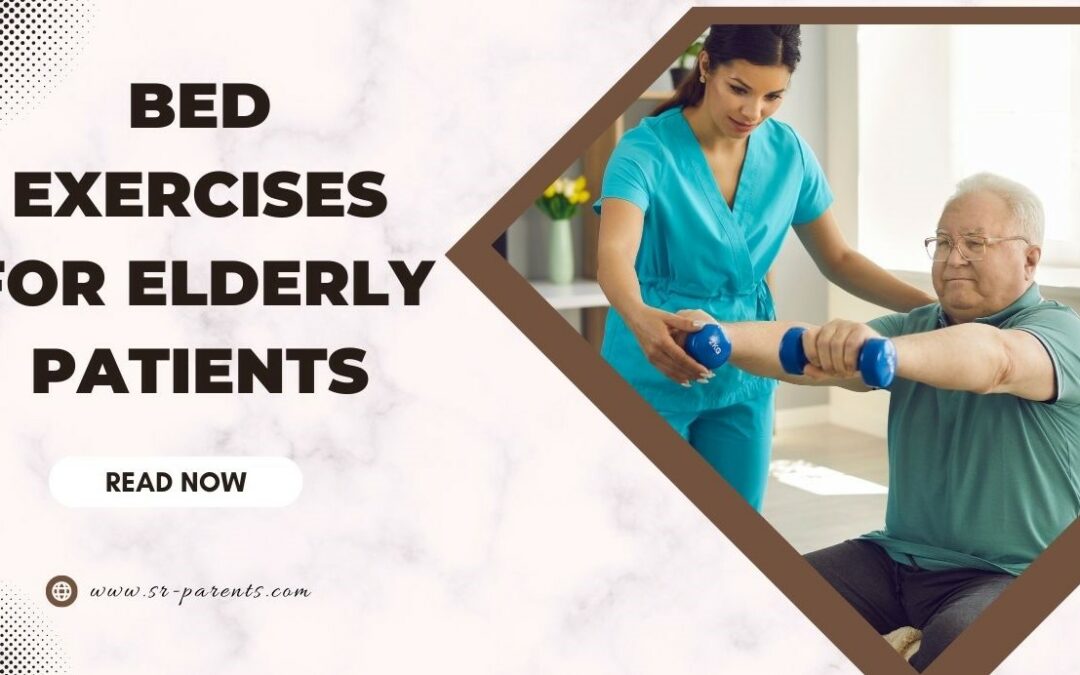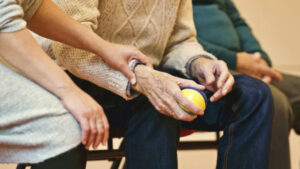In this fast-paced world, it’s essential to acknowledge and address the unique needs of our senior citizens. Regular exercise is crucial for their overall health and well-being, but finding suitable options can be challenging for those who are bedridden or have limited mobility. This article aims to provide a concise yet comprehensive guide to gentle and practical exercises that can be performed from the comfort of their bed.
With sensitivity and empathy towards older people, we have curated a range of exercises specifically designed for their needs, including exercises for bed-bound patients. These exercises are gentle, low-impact, and easily adaptable to different abilities. By incorporating them into their daily routine, elderly patients, including those who are bed-bound, can enjoy improved circulation, flexibility, muscle strength, and mental well-being. Join us on this journey to empower our beloved seniors, including bed-bound patients, with the tools to lead active and fulfilling lives, even from the confines of their beds.
Remember, age and physical limitations need not be barriers to achieving better health. Anyone can embark on a path toward enhanced well-being with guidance and determination. Let’s make exercise an accessible and enjoyable part of every older adult’s life.
Contents
Bed Exercises for Elderly Patients
Physical activities help maintain and improve your mind, body, and soul! There have been countless studies and testimonies about exercises for bedbound patients. Of course, exercise may prove to be a bit more challenging for bedridden patients. Even more so if they’re seniors! Here are some bed exercises for elderly patients that are easy to do.
Bed Exercises for the Elderly
Before we jump into the topic, I need to give out some reminders. One of the most common misconceptions about exercise is that you need to sweat. Training, in general, can range from complex movements to the simplest wrist twisting or exercises for the other leg. Bed exercises for older people don’t have to be anything fancy. The fact is that they are bedridden and need training. So, most of the practices I’ve listed are ones that they can easily do while in bed! Meaning your elderly loved ones can do most of the activities by themselves.
Exercises for the Head and Neck
 Let’s start with bed exercises involving the head and neck for older people. These are critical and fragile areas in the body. That’s why the recommended activities are easy and will take the least time in their day!
Let’s start with bed exercises involving the head and neck for older people. These are critical and fragile areas in the body. That’s why the recommended activities are easy and will take the least time in their day!
1. Head Tilting (Left and Right)
You can have your elderly bedridden patient sit up or lie flat on the bed. Though it would be best that they sit up. Feel around the neck area if they’re not too stiff! The motion is simple: it involves tilting their head left and then holding it there for at least 2 seconds. Counting to two is what works best, in my experience. Then go back to the original position and tilt to the right for 2 seconds. One set would be doing one tilt from the left and right, and four sets should be more than enough in one sitting!
2. Head Turning (Right and Left)
Again, your elderly bedridden patient can do this exercise sitting up or lying flat on the bed. It would still be best if they were sitting up. Note that their necks should only turn as much as possible without discomfort! The motion for this exercise is simple. Your elderly bedridden patient starts by turning their head to the right or left. Hold the position for 2 seconds and then slowly turn in the opposite direction from before. One set would turn left and right once, and four groups should be more than enough.
3. Head Bobbing (Upwards and Downwards)
Again, your elderly bedridden patient can do this exercise sitting up or lying flat on the bed. It would still be best if they were sitting up. Note that their necks should only move as much as they can. The motion for this exercise is similar to the ones for head tilting. Only this time, you’ll have your elderly bob their heads up and down. The exact counting applies, and the critical thing to remember is to do this slowly.
4. Head Rotating (Clockwise and Counter-clockwise)
The earlier exercises build up to this final one for the head and neck parts. Based on personal experience, this exercise is best done in bed. That is because it can get a bit dizzying at times! The movements involve combining head turns and head tilts. You start left, right, up, or down and move clockwise or counterclockwise. Do the whole set of movements slow, and a complete turn will be one set. 2 sets, either clockwise or counter-clockwise, is more than enough.
Bonus Tip
After doing all these, ask your elderly bedridden patient how they feel! Any pain or discomfort is a cause of concern. Depending on the level of pain or discomfort, you may have to take a short break before doing more exercises!

Upper Body Exercises
Now we move on to upper body bed exercises for older people. These exercises are also easy to do, but some will need help. Of course, if your elderly bedridden patient is strong enough, they can do it independently.
1. Finger Bending and Spreading
We start with the hands, particularly the palms and fingers, focusing on hand exercises for elderly individuals and addressing specific areas like finger joints and thumb joints. This exercise is often overlooked because it needs to be more accessible and seems unnecessary. However, these targeted hand exercises help ease any tension in your hands. Have your elderly bedridden patient curl their fingers into a fist as tight as possible, engaging their finger joints. Then have them open their hands up, stretching their fingers as far apart as possible to work on their finger and thumb joints. Repeat this movement around ten times at least to improve flexibility and mobility in their hands.
2. Wrist Rotations
Next would be focusing on the wrist area. The wrist can quickly get stiff, especially for bedridden patients. They won’t get much movement on their wrist, resulting in slight or moderate stiffness. Slowly and gently roll or bend your elderly’s hands to a chosen starting direction. You can choose left, right, up, or down. Then change the rules in a clockwise or counter-clockwise direction. Around four rotations should be more than enough.
3. Elbow Bending
Elbow bending is another easy but very effective upper-body exercise. You may need to help your elderly bedridden patient on this one. The reason is that they may have some form of joint pain. Remember, do not force the movements in any exercises, especially this one. Joint pains can quickly become a significant discomfort. You can start by placing their arms on the side of their body and bending the elbows to a 90-degree angle. Then let their arms rest at the side to end. Do around 10 of these at least or as much as possible.
4. Light Shoulder Movements
I’m ending the upper body bed exercises for elderly patients with easy training. Like elbow bending, make sure not to force the movements. You also need to do this set of workouts slowly and steadily. You start the exercise by raising older people’s arms on their side, then forward and up towards their heads. Try and have it go over their head if possible. Then you put the arm back to the original position. Do at least 10 of these.
Bonus Tip
You can try to have your elderly bedridden patient do these exercises with you guiding them first. Then when they get the hang of it, try to have them do these exercises independently. This will help build self-confidence and give some much-needed feeling of independence!
Lower Body Exercises
 Now we move on to lower body exercises. I’m giving one more training than the usual four since, with bedridden patients; the legs are the most static. This means that elderly bedridden patients are less likely to even move their legs, even for a bit.
Now we move on to lower body exercises. I’m giving one more training than the usual four since, with bedridden patients; the legs are the most static. This means that elderly bedridden patients are less likely to even move their legs, even for a bit.
1. Toe Bending
This exercise is easy and usually done while lying down in bed. You start by curling your toes and then stretching them as far apart as possible, making sure your toes point in opposite directions. Do these movements slowly, like the different exercises, at least ten times.
2. Foot Rotating
This is a lower body exercise your elderly bedridden patient can do alone. The training starts by stretching your foot until your toes are pointing out. Then you rotate your foot in one direction and the opposite direction for a set. Do at least ten sets. Your elderly bedridden patient can do this independently or with your help. It will depend on any existing joint pains or any feeling of discomfort. It would be best for them to do this exercise while lying down.
3. Knee Bending
The exercise starts by straightening both legs and raising one knee at a time. Try to assist your elderly bedridden patient during their first few lifts. Though if they find the exercise difficult, you can help them throughout! Alternate lifting the right and left knee each time. You also don’t have to have your knees raised way too high. Reaching a 90-degree angle would be the best, but getting less is also good enough. Doing ten knee bends per leg would be great!
4. Leg Stretching
This bed exercise for older people starts with resting the legs on the bed. The toes should also be pointing outwards. Then, have your elderly bedridden patient raise the leg upwards one at a time. This exercise is best done while lying down. The legs don’t have to be raised too high. Ensure you assist when they struggle to lift their legs upwards. Have them do ten lifts per leg.
5. Slow Kicks
Like the earlier exercises, this last movement is a combination of other movements. In slow kicks, it will be a combination of knee bending and leg stretching. Remember to keep the movements slow and steady, and always be ready to assist! Start the exercise by having the legs rested on the bed. Then bend the knees and lift to a 90-degree angle. Then lift the rest of the portion straight, as much as possible, and drop it back down. Repeat the movement at least ten times per leg, alternating between left and right.
Bonus Tip
Lower body exercises will be very challenging. Most elderly bedridden patients are either too weak or have joint pains. So don’t get frustrated if they aren’t able to do any of the exercises correctly. Be patient, and make sure that you don’t force any of the movements!
Bonus: Full Body Exercises

I added these exercises as a bonus since not many bedridden elderly patients can do them. Not because they’re hard but because most will need to be better for more significant movements. But these movements are simple and will get their blood pumping. Here are the two regular whole-body exercises:
1. Hip Raising
Hip-raising is precisely how it sounds. Have your elderly bedridden patient lie down on their back in bed for this exercise. Tell them or help them raise their hip as high as possible for 2 seconds. Lower their hip slowly and do the opposite side afterward. Do at least 15 on each side.
2. Side Rolls Movement
Side rolls are straightforward to do and repeat. Have your elderly bedridden patient lie on their back on the bed. Then tell them to roll to one side and hold that position for 2 seconds. Then slowly go back to having them lie on their back and repeat to the opposite side. Do at least 15 on each side.
Bonus Tip
Complete body exercises have a more comprehensive range of movements and positions. So it would be best to have your elderly bedridden patient do the earlier exercises first. That way, they’ll find it easier to perform the complete body exercises well! Also, let them do the exercises again throughout the day. These exercises will not only get their blood pumping but also ease up any stiffness in their body.
Consultation and Recommendations!
Before doing any of the exercises, consult the doctor or caregiver of the elder. Also, ensure that none of the bed exercises for the elderly are painful or uncomfortable. Finally, remember that consistency is vital to keep them healthy!
Bed Exercises for Elderly Patients: Unleashing Health and Happiness
We have explored a variety of bed exercises specifically designed for elderly patients, taking into account their unique needs and limitations. These exercises, ranging from gentle stretches to muscle-strengthening movements, offer a practical and accessible solution to maintain or improve physical health while being confined to a bed.
It is crucial for both caregivers and elderly individuals themselves to recognize the importance of incorporating these exercises into their daily routine. The benefits extend beyond physical well-being, as regular exercise can contribute to improved circulation, flexibility, mood, and overall quality of life.
We encourage you to consider these bed exercises for the elderly, whether you are caring for a loved one or seeking ways to enhance your own well-being. Remember, a small investment of time and effort can yield significant rewards in terms of health, independence, and overall happiness.
Let us embrace the power of movement and help our beloved seniors maintain an active and fulfilling lifestyle, even within the confines of their beds. Together, we can make a positive impact on their lives and inspire others to prioritize the well-being of our elderly population.
FAQs
Do I need to have my elderly bedridden do all the exercises?
No. You only need to have them do as much as they are comfortable doing. Refrain from forcing them to do any of the exercises. Besides, you can also pick a few of the ones on the list to do daily.
Will it be more effective to finish a particular exercise in one sitting?
No. As I said earlier, you can do a set or even half of it at one time and the rest at a later time. Please remember to finish it within the day and not in one set time. Of course, always listen and follow any comments or feedback from your elderly.
Can my elderly bedridden patient take a few days break between exercise days?
No. The most you can do should be a day or two. Any more will make any improvements made from the first exercise session reset. Besides, any exercises in the list are easy to do and finish. Doing and spending slowly is better than not doing so at all!
Connect, Engage, and Inspire: Join Our Elderly Patient Care Community Today!
? Join our thriving community of passionate caregivers and advocates for Elderly Patient Care! ? Connect with us on Facebook, Instagram, and Twitter to discover inspiring content, valuable insights, and a supportive network that shares your dedication. ??
? Dive into a world of engaging stories, practical tips, and heartwarming moments that celebrate the resilience and wellbeing of our beloved seniors. ??
? Like us on Facebook at https://www.facebook.com/sr.parents for daily updates and thought-provoking discussions.
? Follow us on Instagram at https://www.instagram.com/seniorparents/ for beautiful visuals and meaningful quotes that capture the essence of elderly care.
? Join the conversation on Twitter at https://twitter.com/senior_parents, where we share the latest research, news, and connect with like-minded individuals who are passionate about improving the lives of senior citizens.
? Together, let’s nurture a community that fosters love, empathy, and knowledge in the world of caregiving. ??
#ElderlyCare #CaregivingCommunity #SeniorParents






